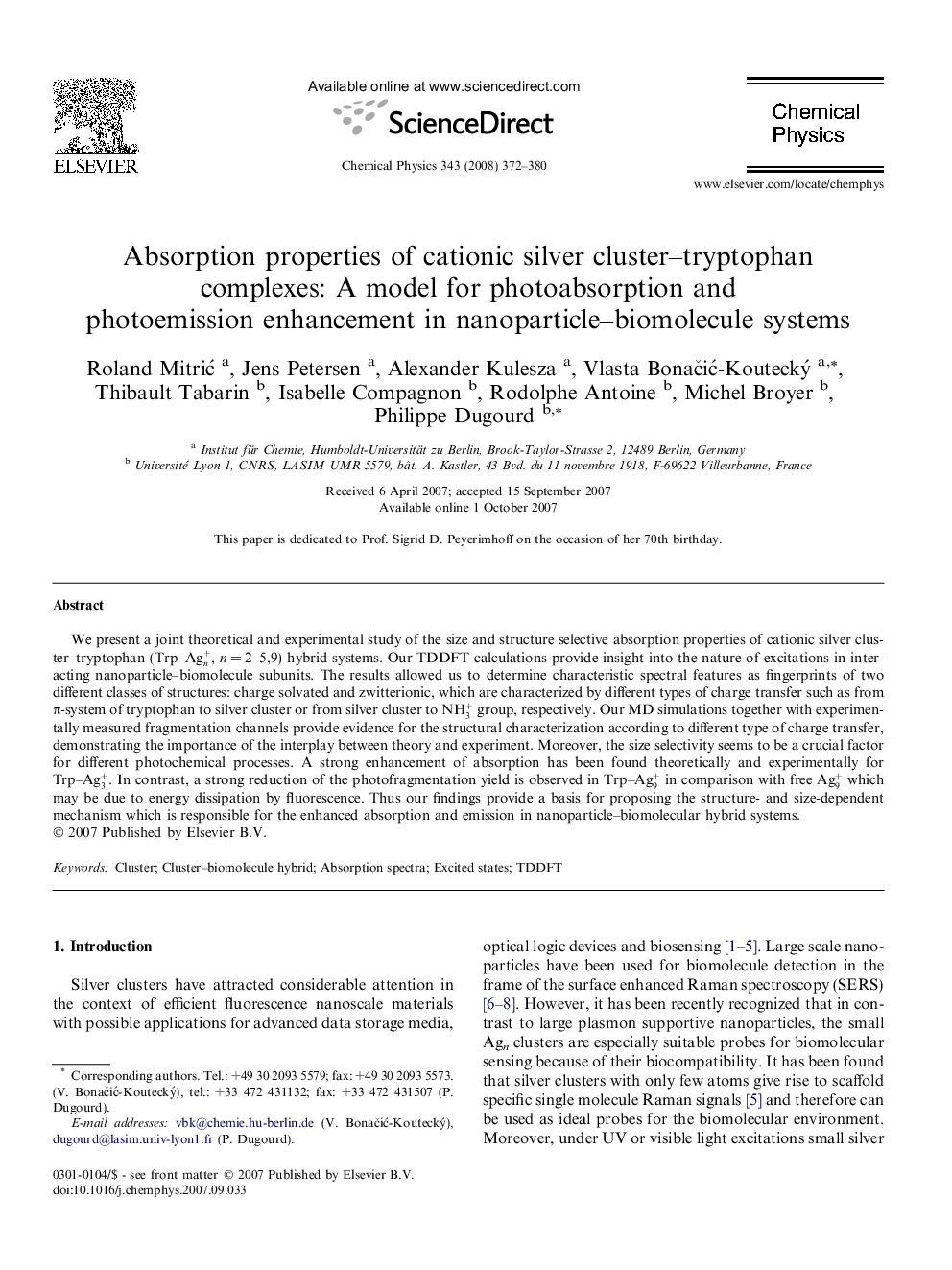| Article ID | Journal | Published Year | Pages | File Type |
|---|---|---|---|---|
| 5376257 | Chemical Physics | 2008 | 9 Pages |
Abstract
We present a joint theoretical and experimental study of the size and structure selective absorption properties of cationic silver cluster-tryptophan (Trp-Agn+, n = 2-5,9) hybrid systems. Our TDDFT calculations provide insight into the nature of excitations in interacting nanoparticle-biomolecule subunits. The results allowed us to determine characteristic spectral features as fingerprints of two different classes of structures: charge solvated and zwitterionic, which are characterized by different types of charge transfer such as from Ï-system of tryptophan to silver cluster or from silver cluster to NH3+ group, respectively. Our MD simulations together with experimentally measured fragmentation channels provide evidence for the structural characterization according to different type of charge transfer, demonstrating the importance of the interplay between theory and experiment. Moreover, the size selectivity seems to be a crucial factor for different photochemical processes. A strong enhancement of absorption has been found theoretically and experimentally for Trp-Ag3+. In contrast, a strong reduction of the photofragmentation yield is observed in Trp-Ag9+ in comparison with free Ag9+ which may be due to energy dissipation by fluorescence. Thus our findings provide a basis for proposing the structure- and size-dependent mechanism which is responsible for the enhanced absorption and emission in nanoparticle-biomolecular hybrid systems.
Related Topics
Physical Sciences and Engineering
Chemistry
Physical and Theoretical Chemistry
Authors
Roland MitriÄ, Jens Petersen, Alexander Kulesza, Vlasta BonaÄiÄ-Koutecký, Thibault Tabarin, Isabelle Compagnon, Rodolphe Antoine, Michel Broyer, Philippe Dugourd,
